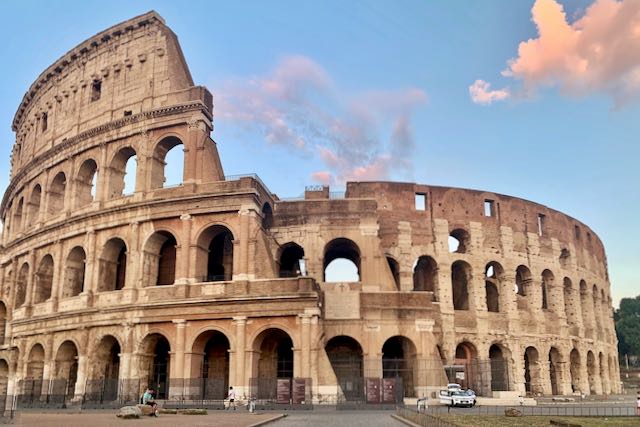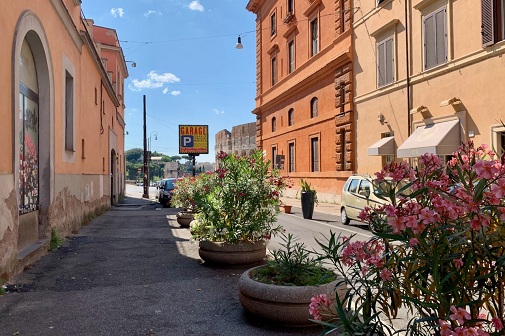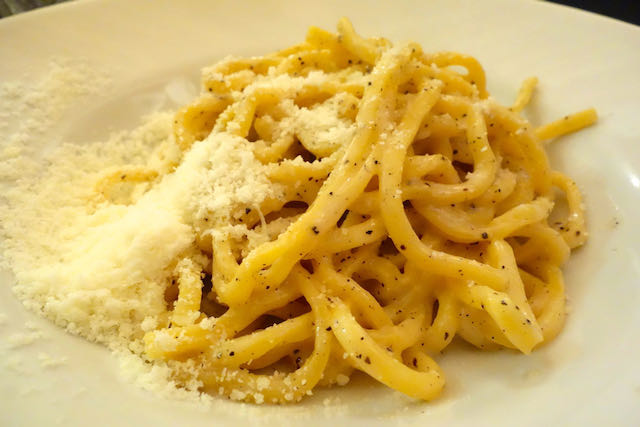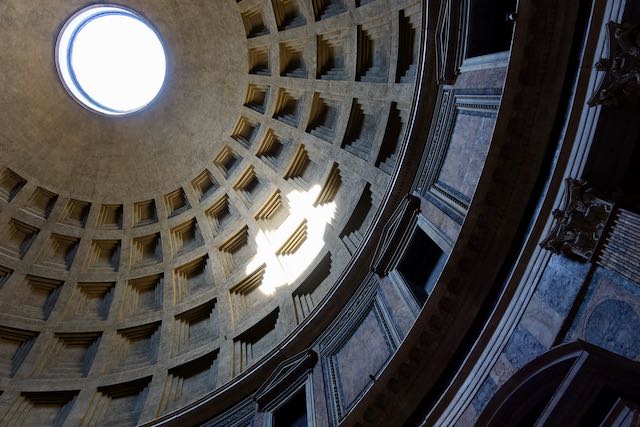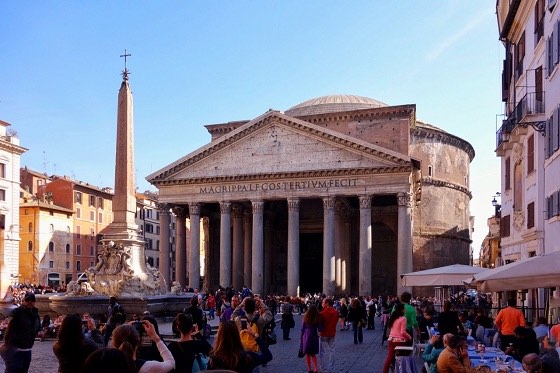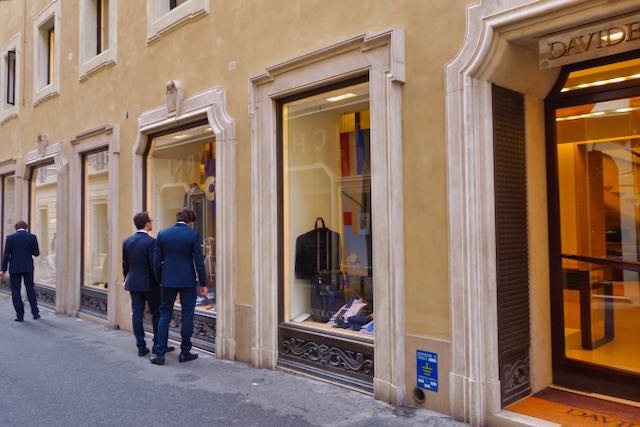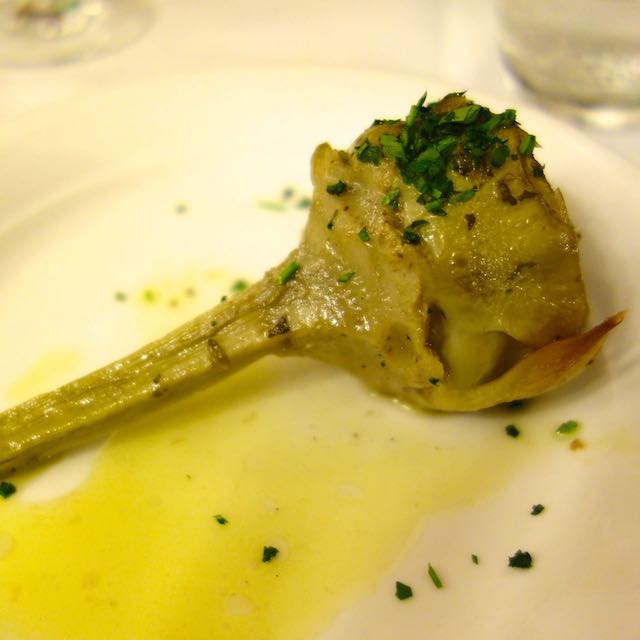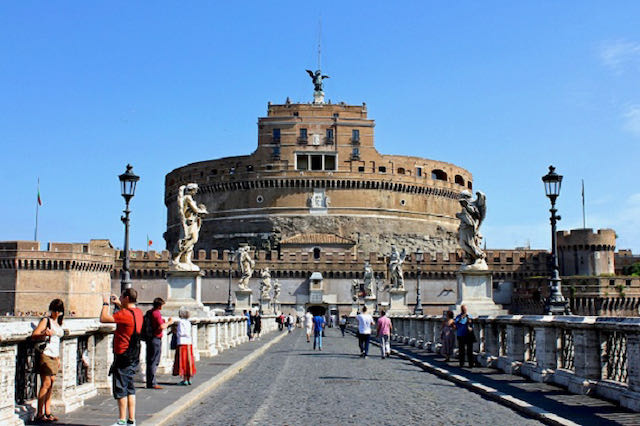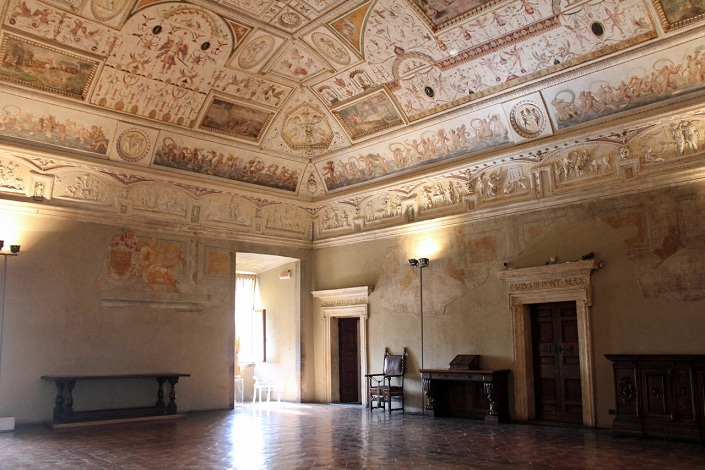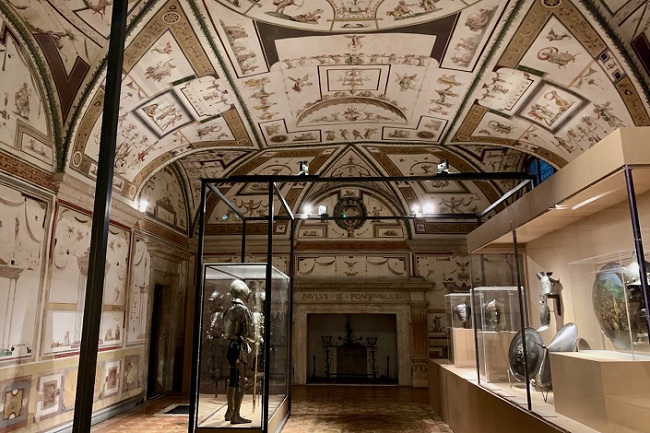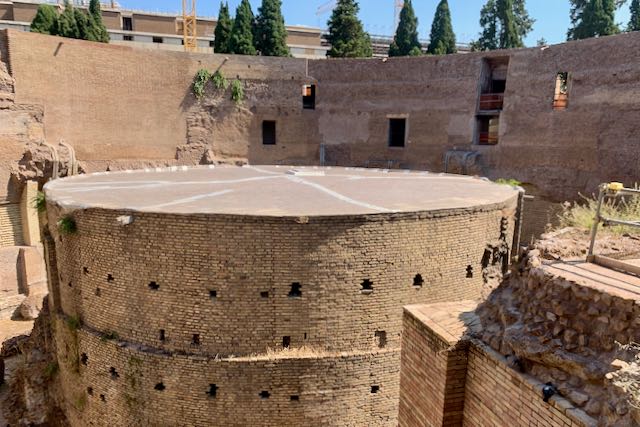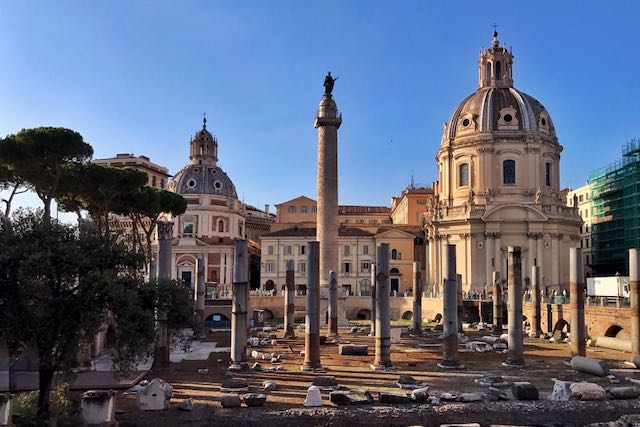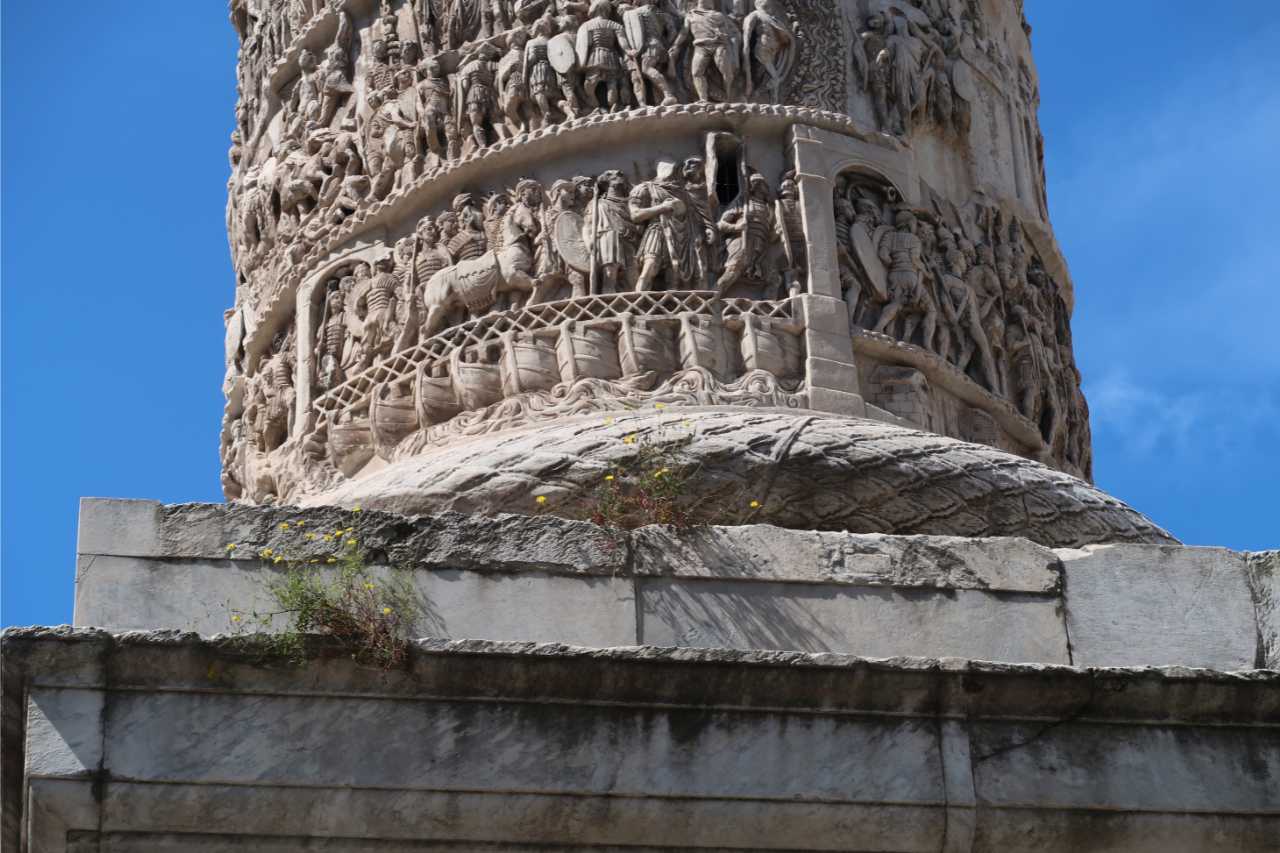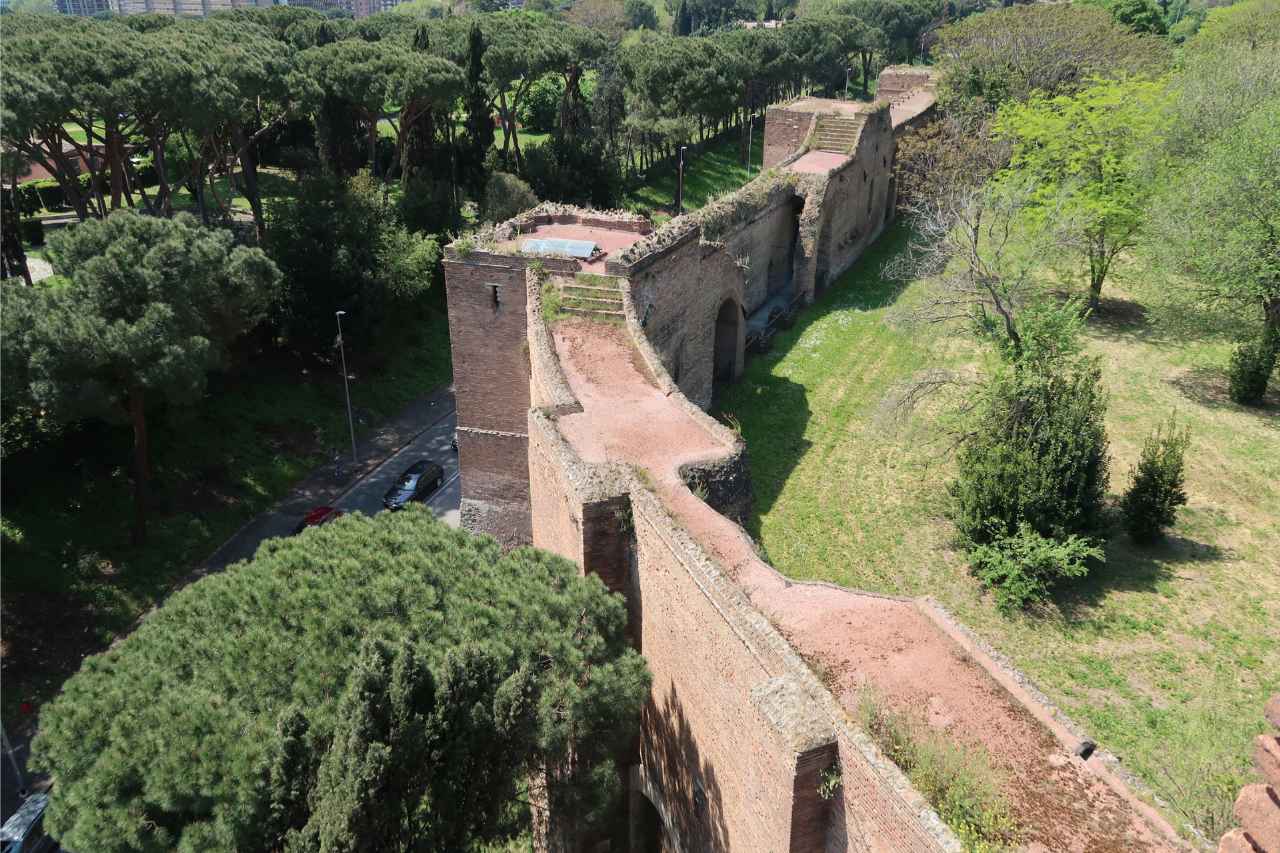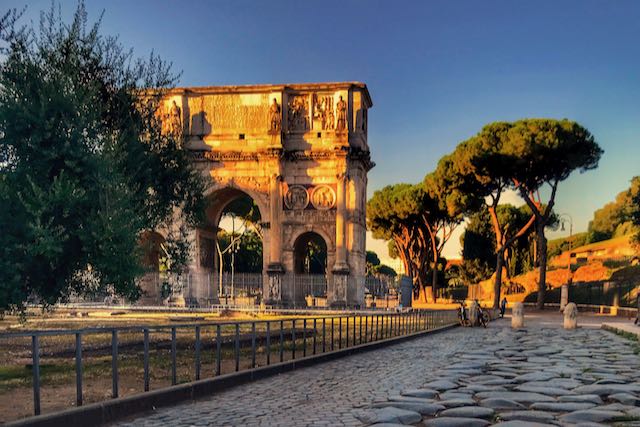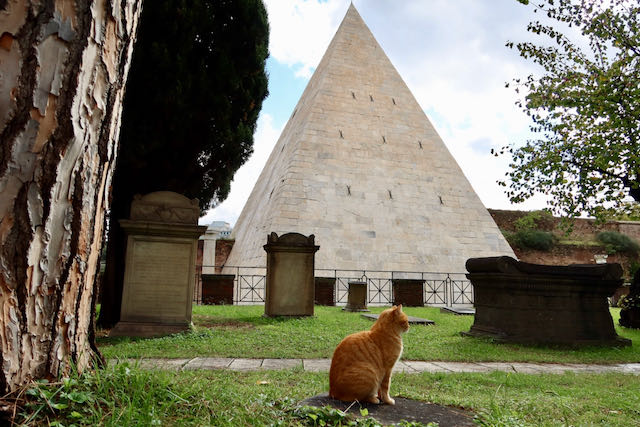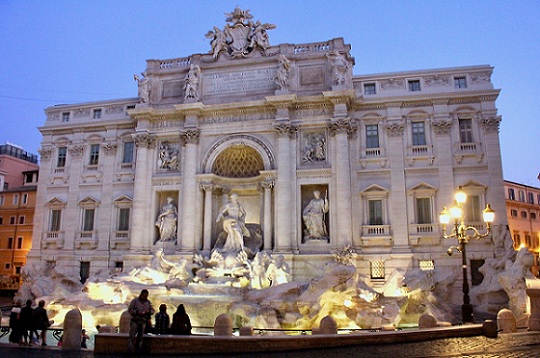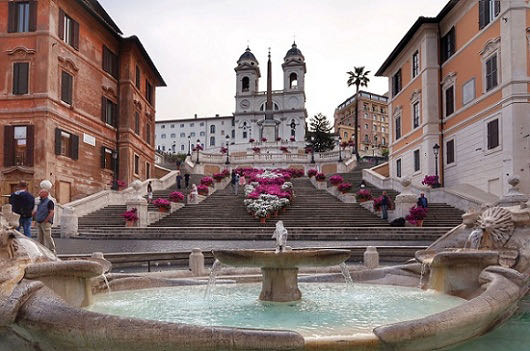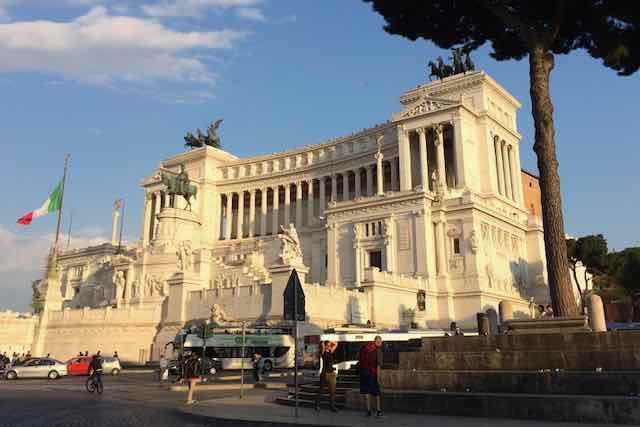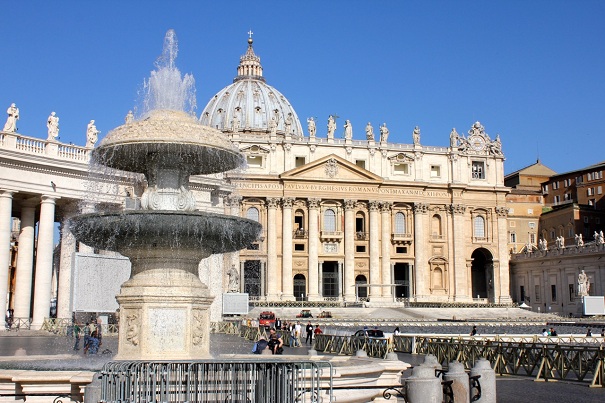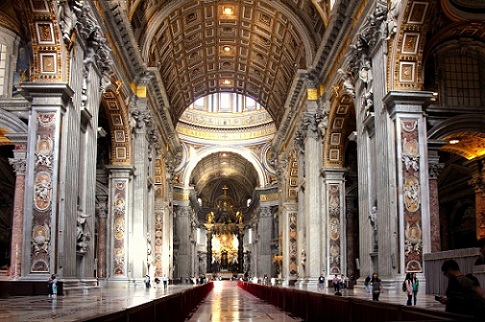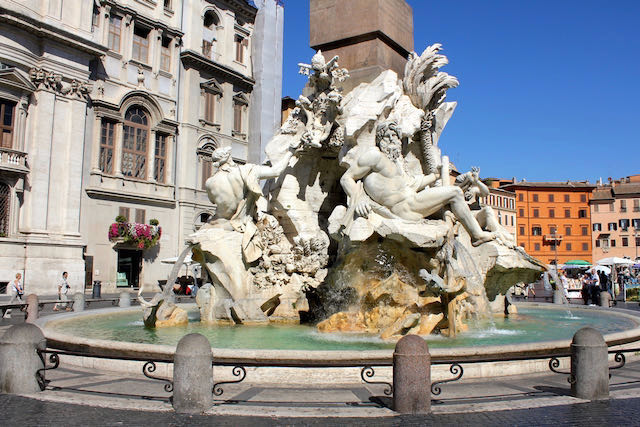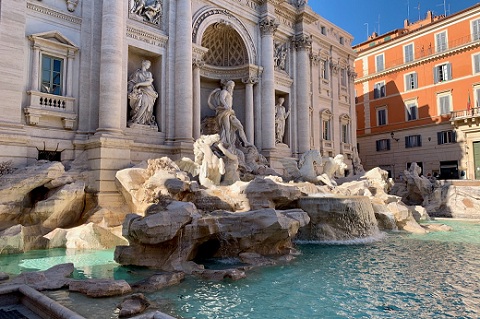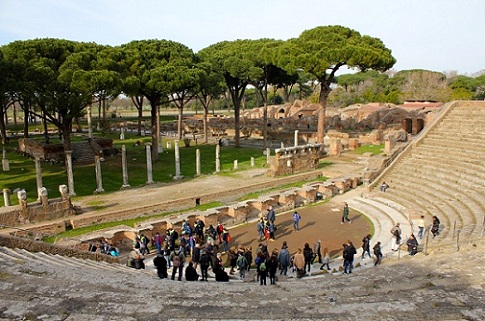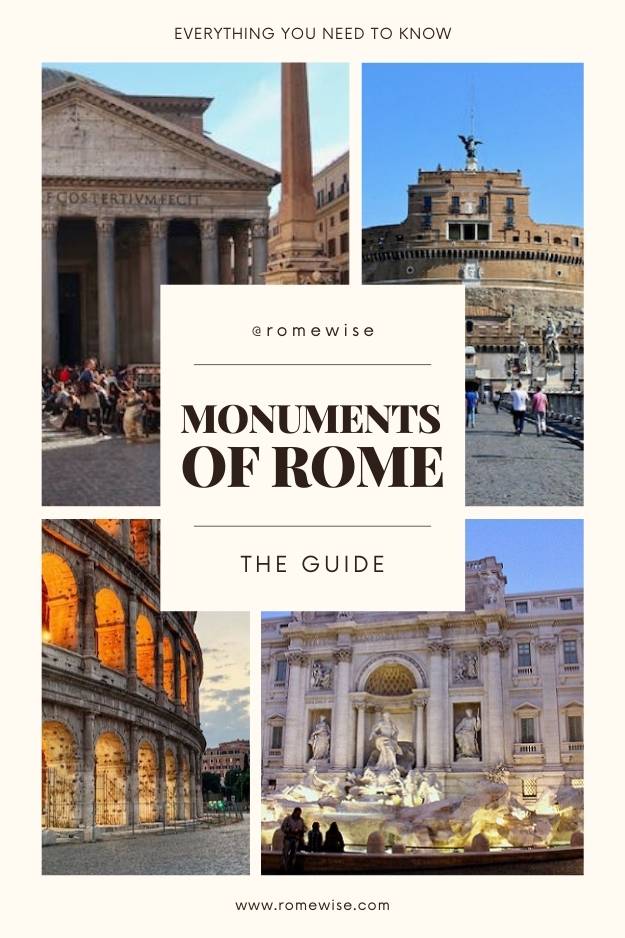- Sign up & get a FREE ebook Subscribe NOW!
- Romewise Home Page
- Monuments in Rome
Essential Guide to the Best Monuments in Rome
I started to make a list of all the monuments in Rome and realized I'd have to cut it off at some point!
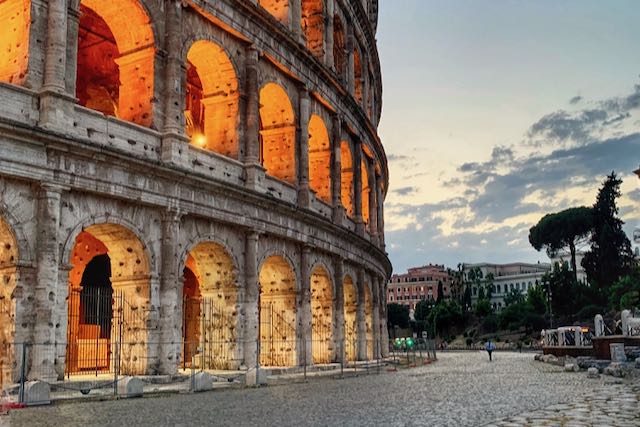 The Colosseum is probably one of the first landmarks people think about when they think about Rome, but there are lots more to discover!
The Colosseum is probably one of the first landmarks people think about when they think about Rome, but there are lots more to discover!Whether you're visiting Rome for the first time or the tenth, here for a 1-day visit or a week, you'll want to visit as many of these famous landmarks in Rome as you can.
Monuments and Famous Landmarks in Rome
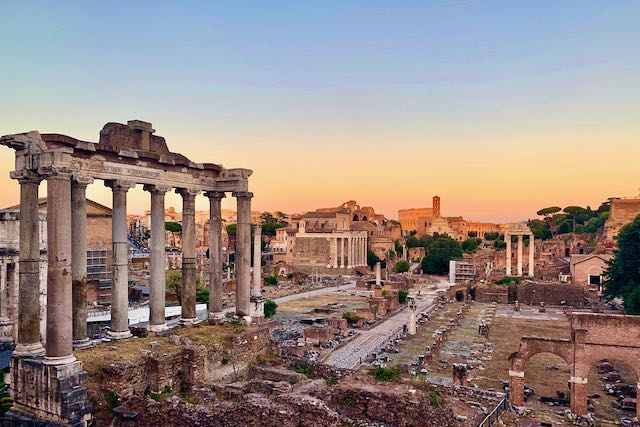 This view of the Roman Forum from Capitoline Hill shows many Ancient Roman monuments, including the Colosseum in the background.
This view of the Roman Forum from Capitoline Hill shows many Ancient Roman monuments, including the Colosseum in the background.Rome's historic center is a UNESCO World Heritage Site all by itself.
It's no wonder that the city is chock-a-block with historical Rome monuments.
You will likely see them whether you plan to or not, as they are often packed together in Rome's historic center, around Capitoline Hill.
Since so many are dotted throughout the city, you can often see them for free as you walk around, certainly from the outside.
WHAT IS A MONUMENT?
A monument is defined as being a building or structure.
On this page, I am listing these types of structures, as opposed to piazzas, streets, large complexes, or neighborhoods.
In Rome, we can divide the landmarks into two lists, ancient monuments and more modern ones.
On this page, you'll find:
- Ancient Rome monuments and ruins - the must-sees!
- Other less obvious historical monuments
- More "modern" Rome monuments - built more or less from the Renaissance onward
Most visited Ancient Rome landmarks
The most important and must-see famous landmarks from Ancient Rome are:
The Colosseum
Rome's most iconic monument, the Colosseum was built in the 1st century CE for gladiator battles and other public entertainment, now found close to the ruins of the Imperial Forums, Palatine Hill and Roman Forum.
You can easily see the Colosseum for free from the outside.
To learn about how to visit this famous landmark, visit my dedicated Colosseum hub page here.
Two other arenas, or rather stadiums from antiquity are the Circus Maximus and Domitian's Stadium.
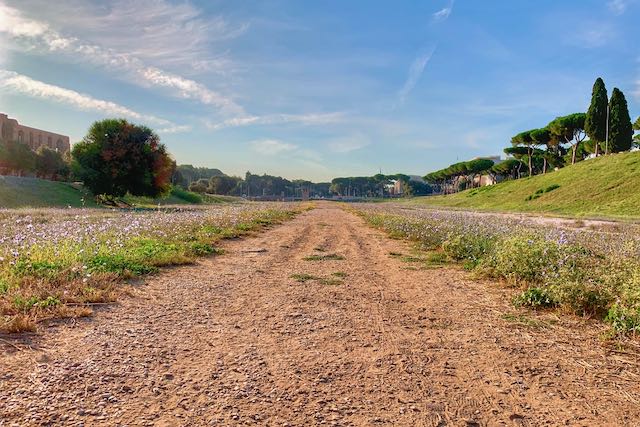 Today the Circus Maximus is a big grassy field, but it was once the largest stadium ever built.
Today the Circus Maximus is a big grassy field, but it was once the largest stadium ever built.Since neither of these still stands today as they once did, I am not officially including them in this list of historical monuments, although both sites merit a visit.
The Circus Maximus today is mostly a huge park but there are some things you can see and do there.
Domitian's stadium is now Piazza Navona, which you'll likely be visiting during your Rome trip as one of the Eternal City's most famous squares.
And if you want, you can visit part of Domitian's stadium by heading underground, at the north end of Piazza Navona.
Caveat - I am also not including the Roman Forum or Palatine Hill on this list, because as I mentioned above, a monument is defined as being a building or structure.
For a list of must-see sites in Rome, which do include the Roman Forum and Palatine Hill, visit my dedicated page here.
✨ Experience all of Rome's Magic in a Day ✨
Wander through the city's historic center with a local guide, discovering iconic landmarks like the Trevi Fountain, Pantheon, and Piazza Navona — then take a private transfer to The Vatican. Perfect for first-time or hundreth-time visitors, this expertly guided tour reveals the Eternal City’s beauty and rich history at its most enchanting.
The Pantheon
The ancient structure we now call the Pantheon is an awe-inspiring feat of engineering, originally built during the time of Emperor Augustus and then rebuilt in the 2nd century CE by Emperor Hadrian.
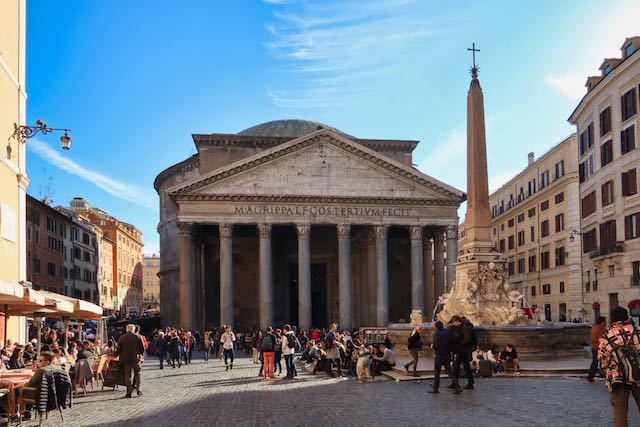 The Pantheon is one of my absolute favorite places in Rome, well worth including in your trip itinerary.
The Pantheon is one of my absolute favorite places in Rome, well worth including in your trip itinerary.Because it was turned into a Christian church in the 7th century, the Pantheon is one of the best-preserved buildings from Ancient Rome to survive to this day, and one of the top Rome landmarks.
Found in Piazza della Rotonda, the Pantheon is one of the most visited monuments in Rome for a reason!
To learn more about the Pantheon and how to visit it, visit my dedicated page here.
Jump start your trip to Rome with a free ebook 😀
Sign-up to our free newsletter and receive our Quick Start Guide to Rome ebook which share's everything you need to know to plan the perfect trip to the Eternal City 🙌
Castel Sant'Angelo
It might not be evident at first glance, but this giant edifice began as a monument during the Roman Empire.
It was originally the mausoleum of Roman Emperor Hadrian, constructed around 130 CE on the banks of the River Tiber.
In the Middle Ages it became a fortress, then later a papal party palace, a prison, and the site of gruesome executions.
It's now a museum and worth visiting for its layers of architecture and stunning Renaissance art, not to mention the panoramic view!
Augustus' Mausoleum
This mausoleum was built for Rome's first emperor, Octavian Augustus.
Like Hadrian's Mausoleum (which came 100 years after this one), its use has changed quite a bit over its history.
Eventually the mausoleum was abandoned and lay forlorn and forgotten, but in recent years it has been restored and now we can visit it.
For more about how to visit this monument, visit my page here.
Ready to plan your trip?
Book your train
Planning to travel between cities in Italy and other parts of Europe?
Use Trainline to see all the different options available across the different rail companies.
Find your hotel
Find your perfect place to stay in Rome.
Use Booking.com to choose between hotels, guesthouses, and self-catering apartments in neighborhoods throughout the Eternal City.
Buy your TurboPass
Purchase the convenient Turbopass and visit all of Rome's top attractions including the Colosseum, Pantheon, and Vatican.
With one handy pass, it's all included.
Rome monuments that may be less well-known
Trajan's Column
Built in 113 CE to commemorate Roman Emperor Trajan, this 98-foot column is decorated with incredible carvings detailing the history of the emperor's military campaign and victory over Dacia (today Romania).
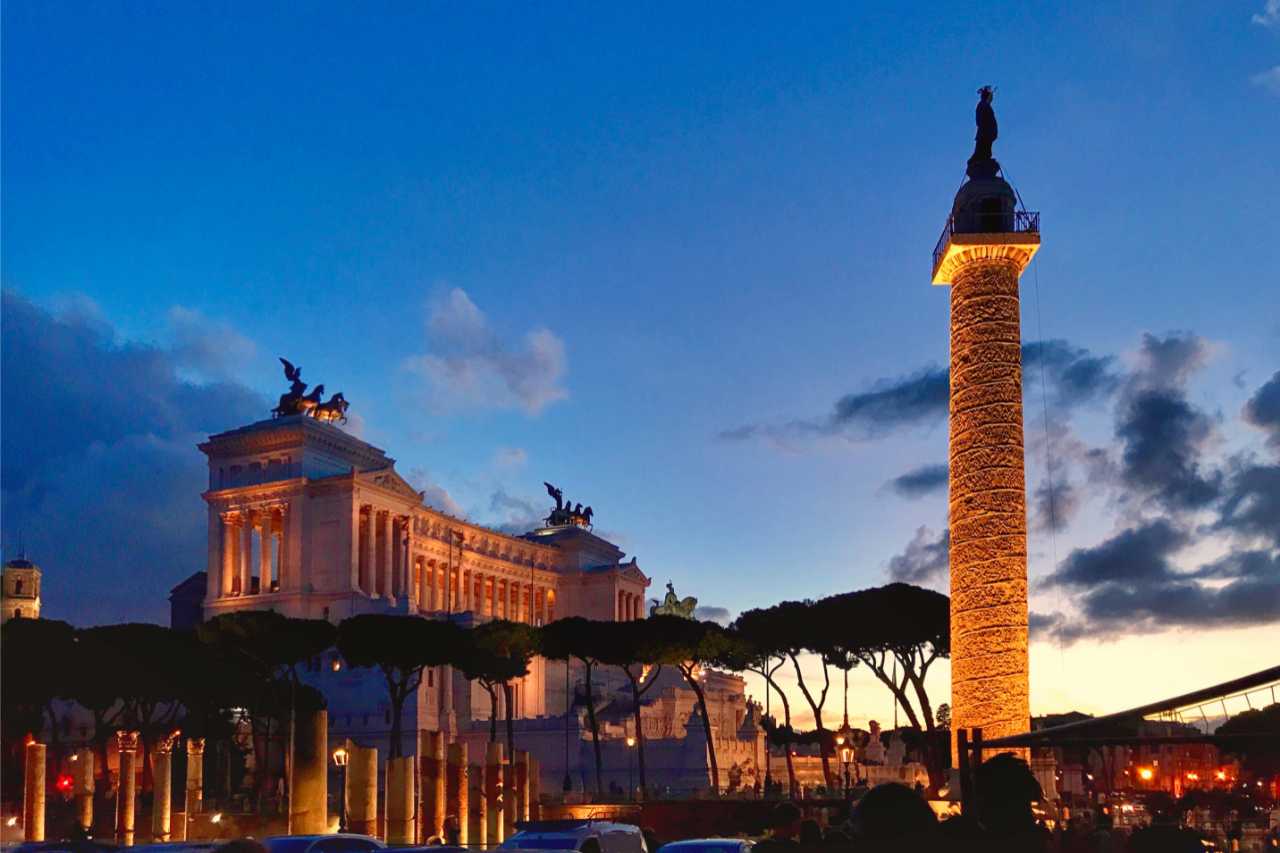 The blue hour is one of the most beautiful times of day to enjoy Trajan's column and the Vittoriano monument.
The blue hour is one of the most beautiful times of day to enjoy Trajan's column and the Vittoriano monument.Just minutes from Piazza Venezia, the column stands in Trajan Forum along the via dei Fori Imperiali (across the road from the Roman Forum) and you can get fairly close to it from the external viewpoints, or by visiting the forum itself.
You can also see more of its base if you visit Palazzo Valentini, an underground Roman Domus adjacent to the forum.
The Column of Marcus Aurelius
This ancient monument was built in 180 CE and modelled after the Column of Trajan.
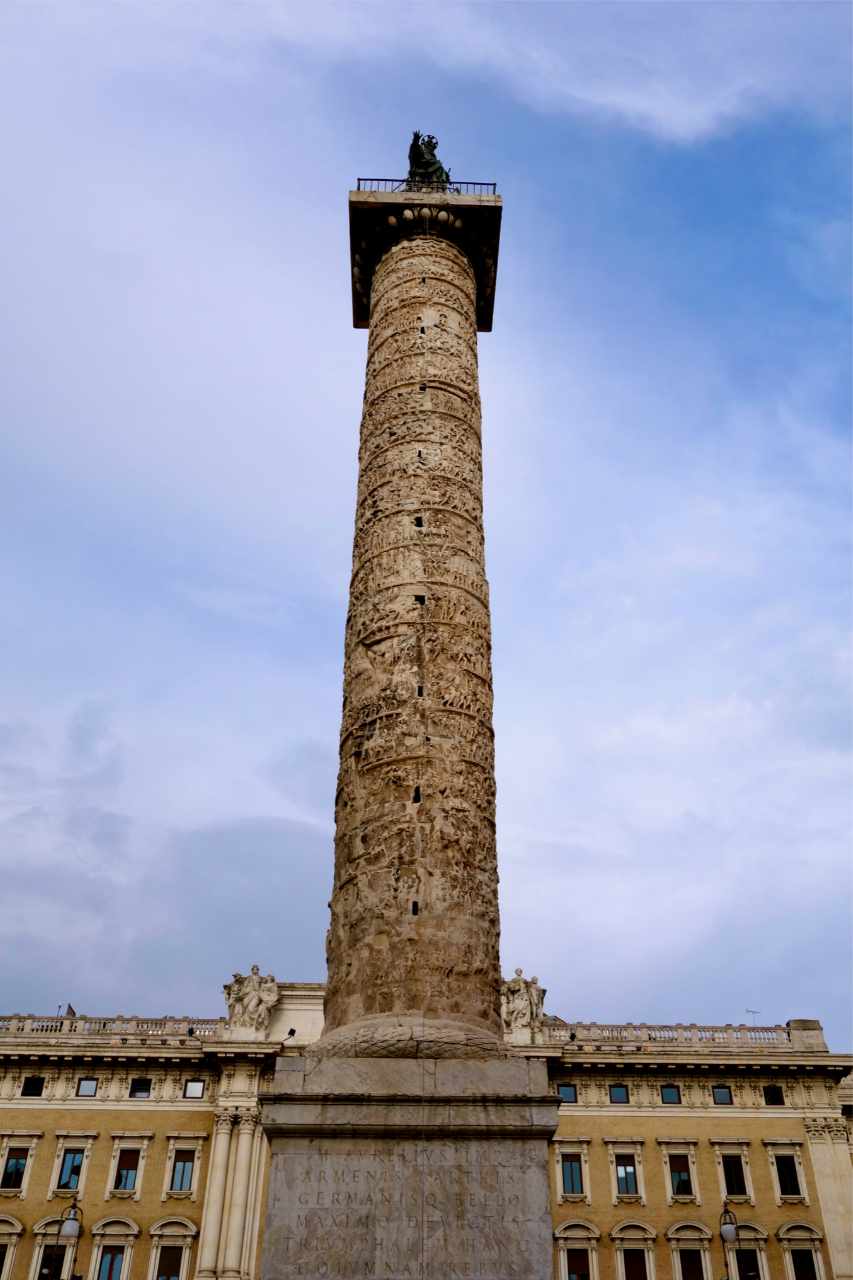 The column of Marcus Aurelius makes for an impressive monument in Piazza Colonna.
The column of Marcus Aurelius makes for an impressive monument in Piazza Colonna.It stands 113 feet / 34.5 meters tall and is carved with reliefs depicting scenes from Emperor Marcus Aurelius' military campaigns.
In the 16th century, Pope Sixtus V placed statues of Rome's patron saints Peter (Trajan's Column) and Paul (Marcus Aurelius' Column) on top of these columns, changing their history from pagan to Christian.
Disclosure: If you make a purchase through a link on this page, I may receive a small commission - at no extra cost to you. Thank you for supporting my site!
The Aurelian Walls
Many people do not realize that the Aurelian Walls are actually the largest Ancient Roman monument in Rome.
Constructed between 271 and 275 CE under Roman Emperor Aurelian (not Marcus Aurelius), these walls helped defend the ancient city center against attack.
They originally ran 19km (12 miles) all around the original seven hills of Rome.
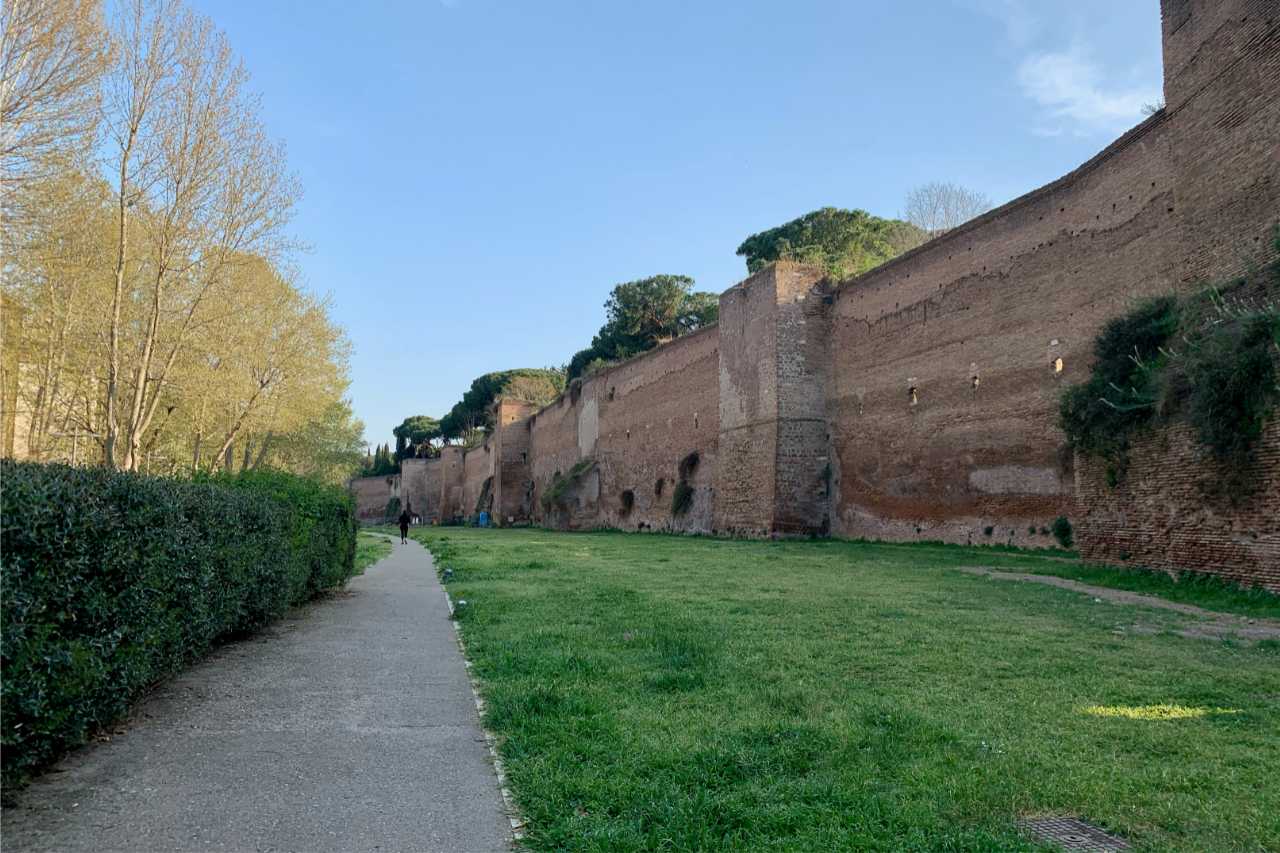 The Aurelian Walls can be found in many neighborhoods around Rome.
The Aurelian Walls can be found in many neighborhoods around Rome.Some parts of the walls are missing but they are fairly intact even today, and you can even visit them for free.
Theater of Marcellus
People often mistake this building for the Colosseum, but it was actually an open-air theater for watching plays and musical productions.
The theater could accommodate up to 20,000 spectators.
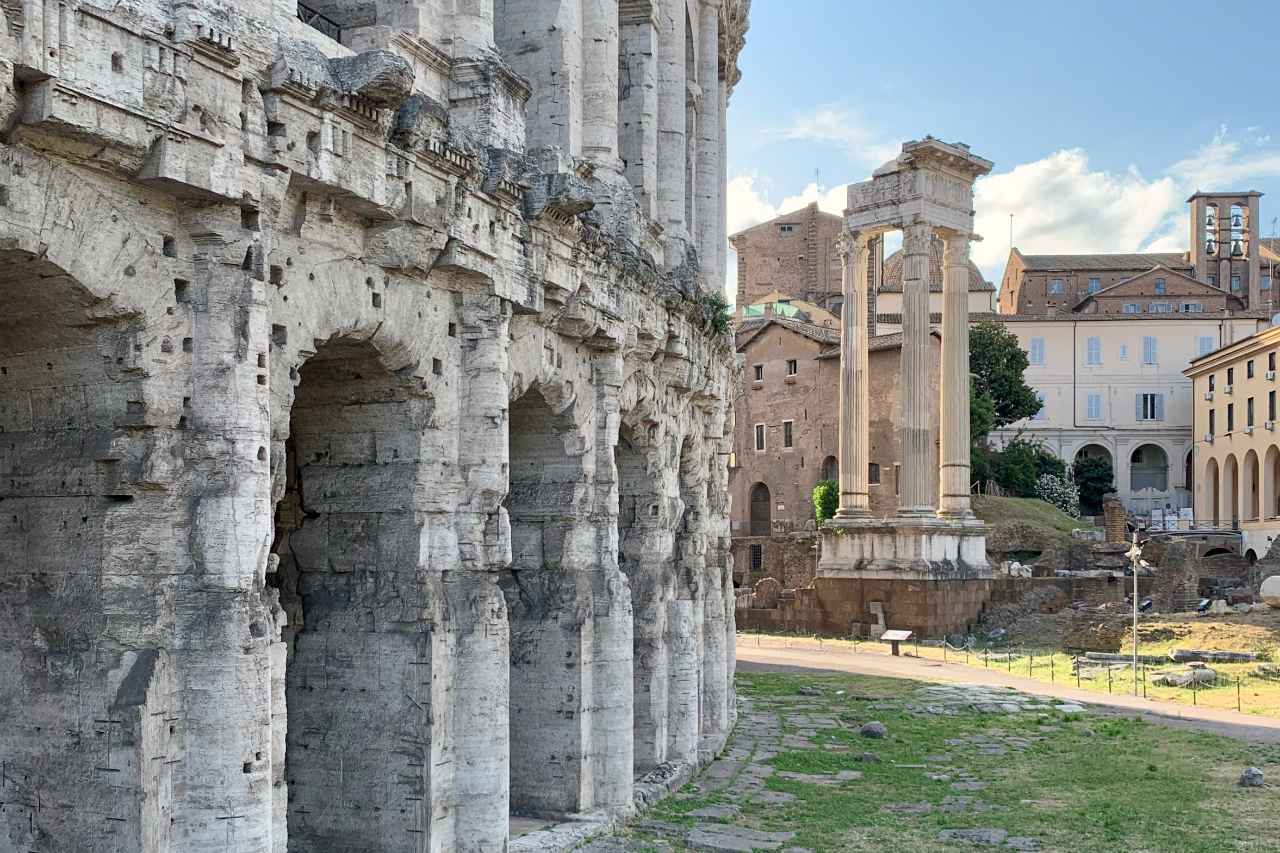 The theater of Marcellus closely resembles the Colosseum but was built around 100 years earlier than that more famous amphitheater.
The theater of Marcellus closely resembles the Colosseum but was built around 100 years earlier than that more famous amphitheater.Constructed around 100 years prior to the Colosseum under Emperor Augustus, the Teatro di Marcello was named for Augustus' nephew, Marcellus, his sister Octavia's son who died prematurely of fever at the age of 19 or 20.
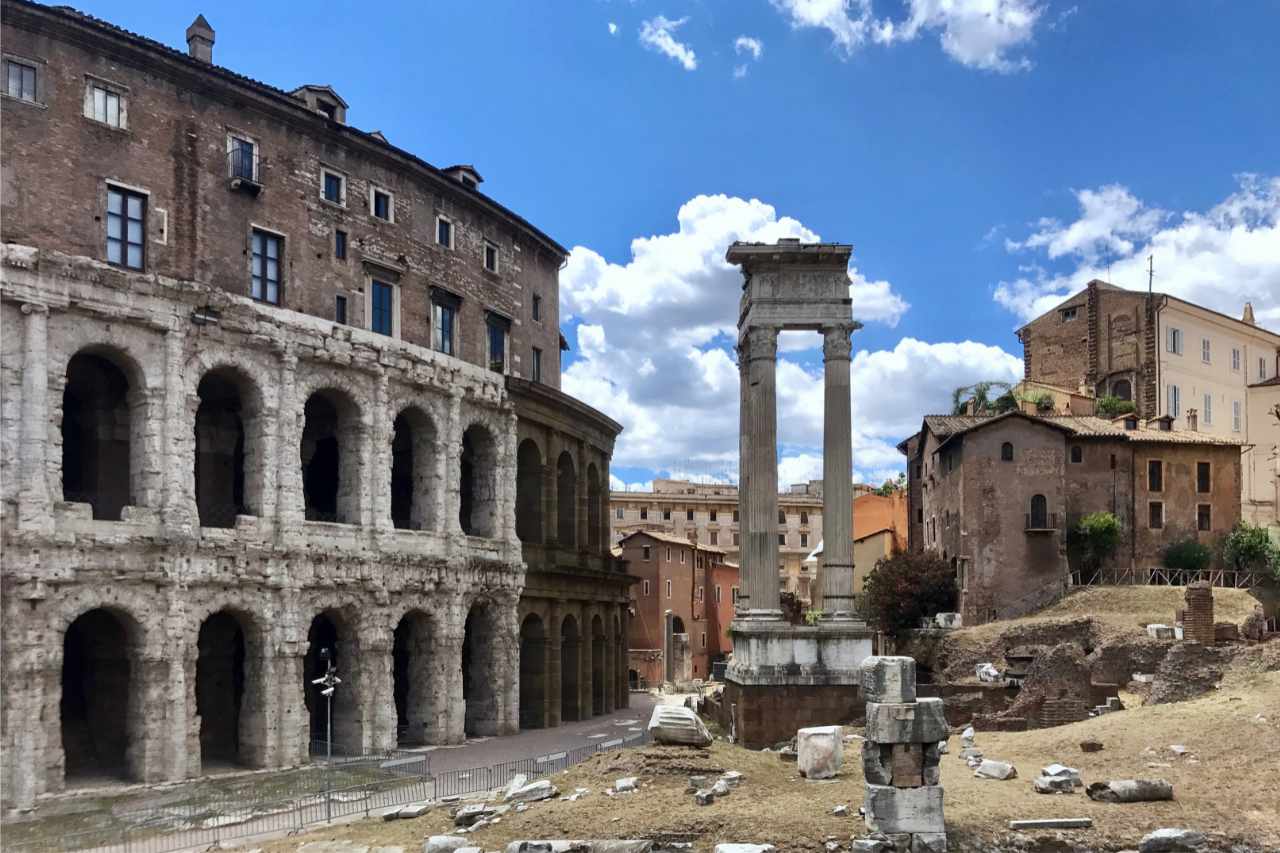 The theater of Marcellus sits on the edge of the Jewish Ghetto.
The theater of Marcellus sits on the edge of the Jewish Ghetto.Today it sits on the edge of the Jewish Ghetto.
While the structure has been a private condominium for the past few centuries, you can walk past the outside.
Temple of Hercules Victor
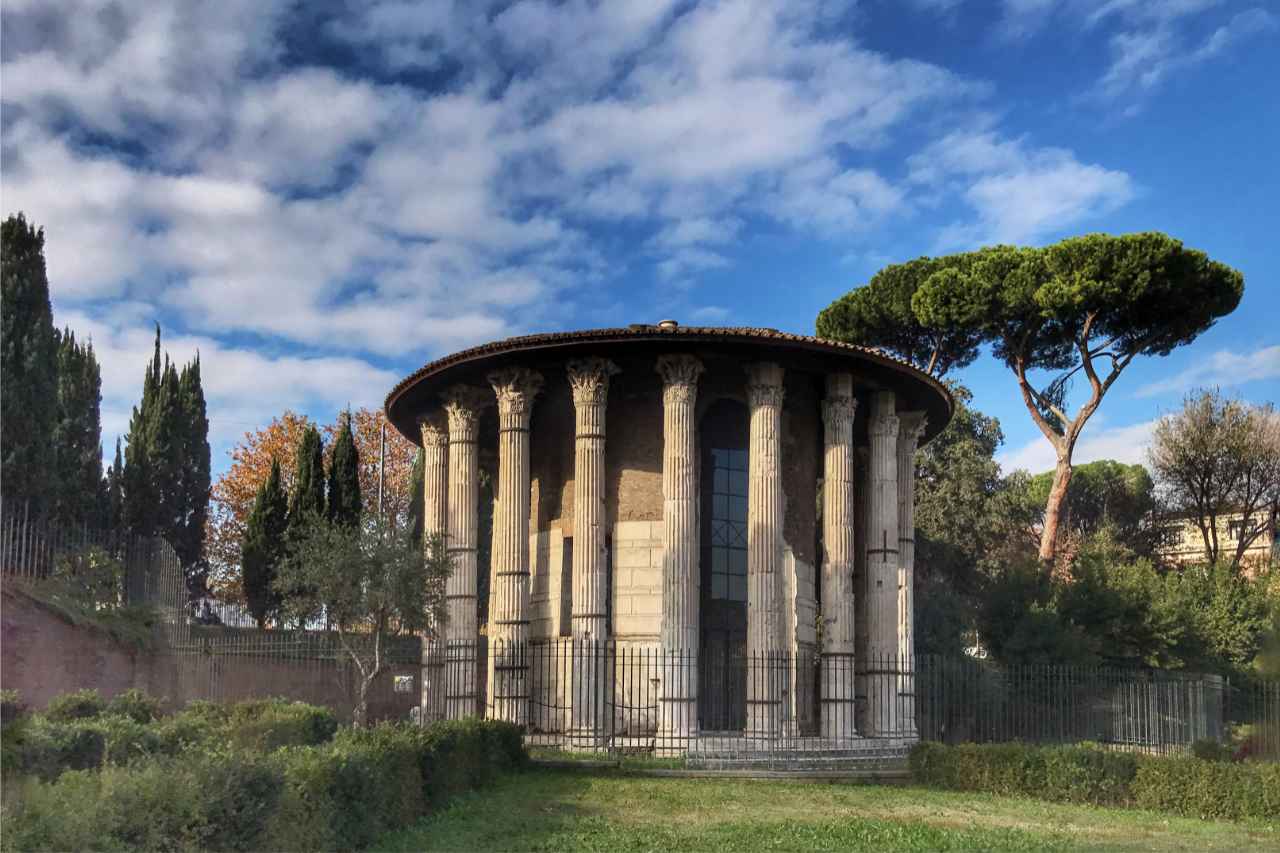 I think the temple to Hercules Victor is one of the most beautiful monuments from Ancient Rome in Rome.
I think the temple to Hercules Victor is one of the most beautiful monuments from Ancient Rome in Rome.This ancient pagan temple was built near the Tiber river on the Foro Boario, an old cattle market, in the 2nd century BCE.
It's the oldest surviving marble building from antiquity in the city.
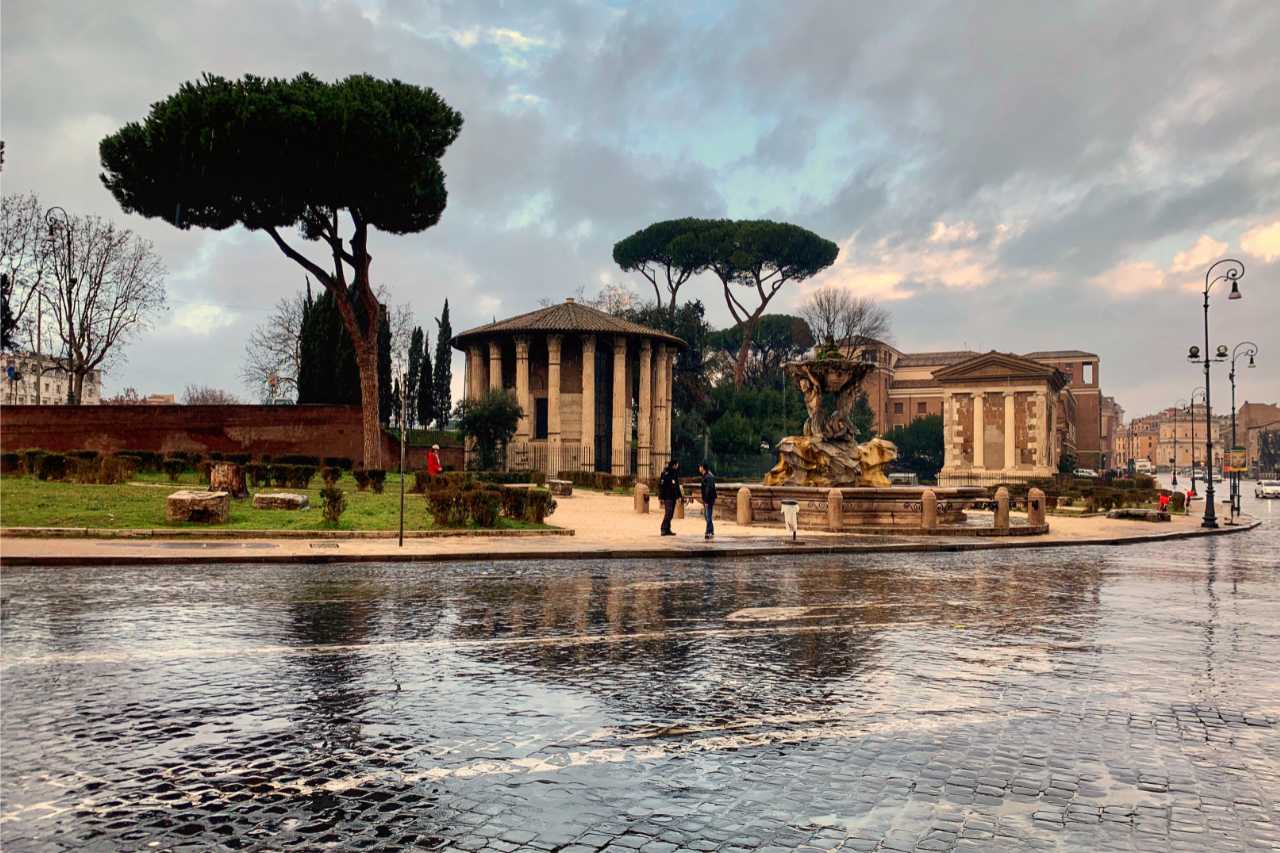 Two of Rome's most ancient monuments sit right near each other and are also just a few meters away from another ancient monument, the temple of Janus.
Two of Rome's most ancient monuments sit right near each other and are also just a few meters away from another ancient monument, the temple of Janus.This Rome monument is an interesting example of how the Romans often incorporated elements from conquered cultures - this one includes Greek details.
Like the Pantheon, this temple was converted to a Christian church which helped preserve it.
Despite its name, to this day we do not know to whom the temple was really dedicated, or what it was used for.
The perfect 3-day itinerary in Rome
Trying to figure out how to organize your visit to Rome? I've got the perfect 3-day itinerary for first-time visitors (or those who have not been here in a while.) It works for a 2.5 day visit as well.
In my 3-day itinerary, you'll see all the major must-see Rome attractions like the Vatican, Colosseum, Trevi Fountain, Pantheon, Piazza Navona, Spanish Steps, and much more.
And if you have more time, or want suggestions for extra/other things to do, you'll find that there too.
Visit my page with the best 3-day itinerary in Rome for first-timers.
Temple of Portunus
Just next to the temple of Hercules Victor sits the temple of Portunus.
This 1st-century BCE temple is composed of a mixture of architectural styles that include Etruscan, Greek and Roman.
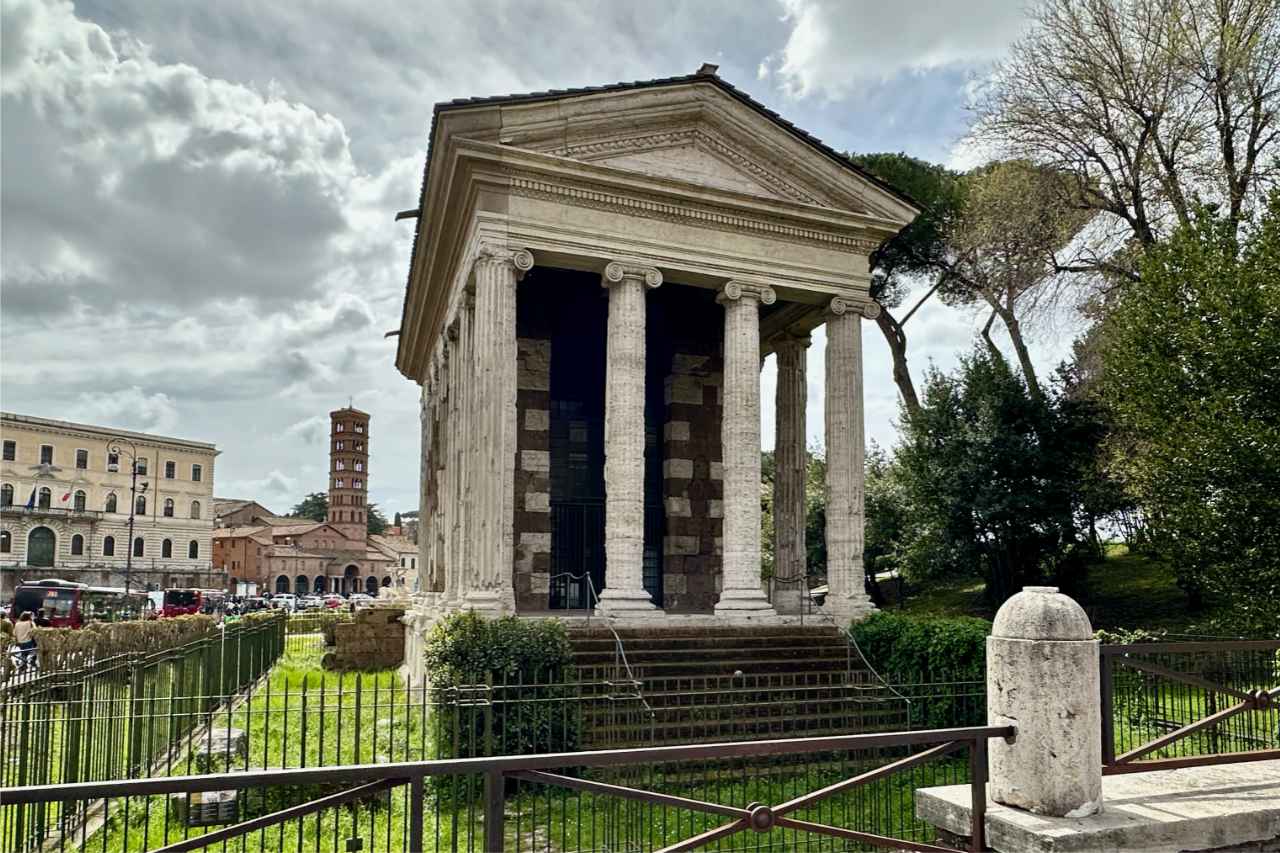 The temple of Portunus is an excellent example of early Roman architecture. It's also reminiscent of many modern bank and government buildings that were inspired by this architecture.
The temple of Portunus is an excellent example of early Roman architecture. It's also reminiscent of many modern bank and government buildings that were inspired by this architecture.You might notice that many modern small stand-alone banks use this form today.
As with the two other structures nearby, we don't know the exact purpose of this building.
In 872 it was converted to a church, which helped preserve it.
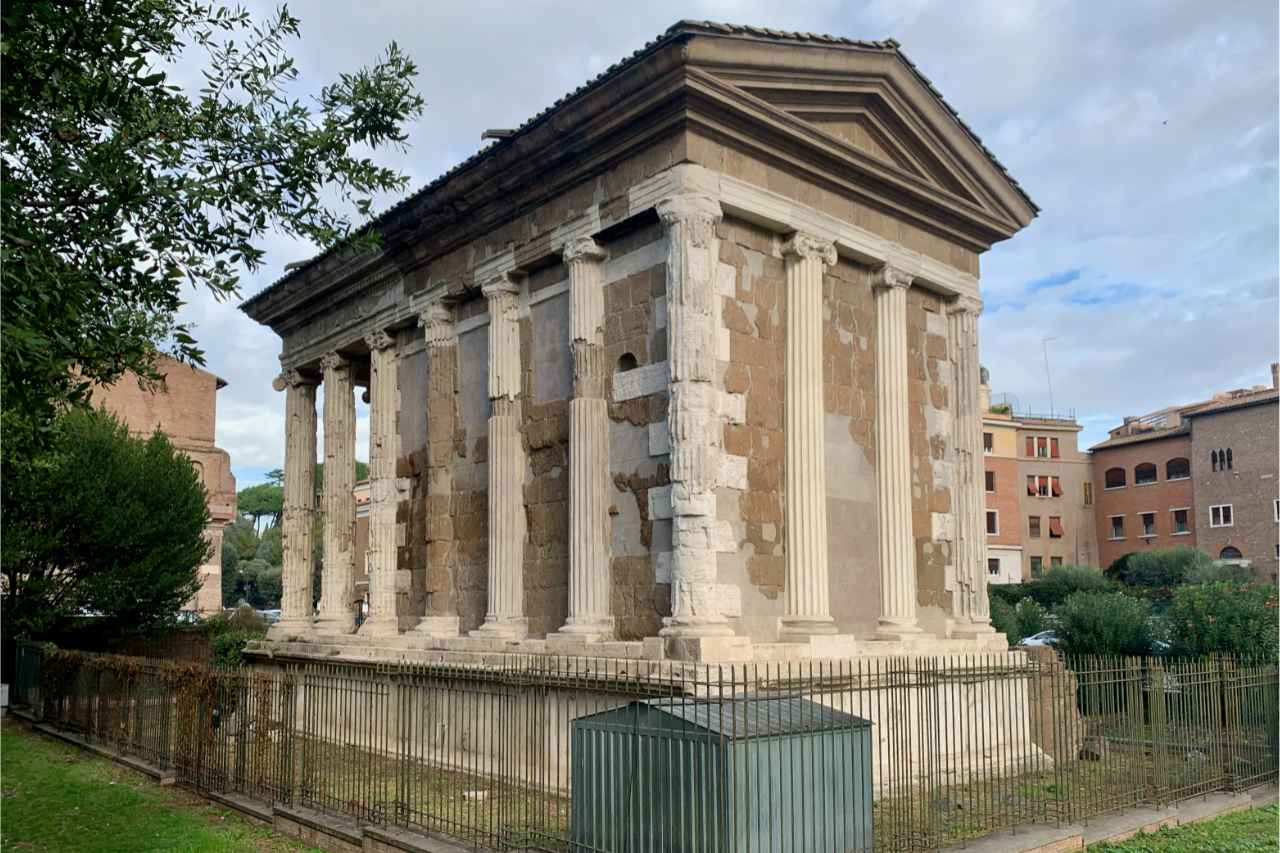 When you look at the Temple of Portunus from the back, you can really see the mix of architectural styles.
When you look at the Temple of Portunus from the back, you can really see the mix of architectural styles.Arch of Janus
This 4th-century CE arch is the only four-sided arch in Rome.
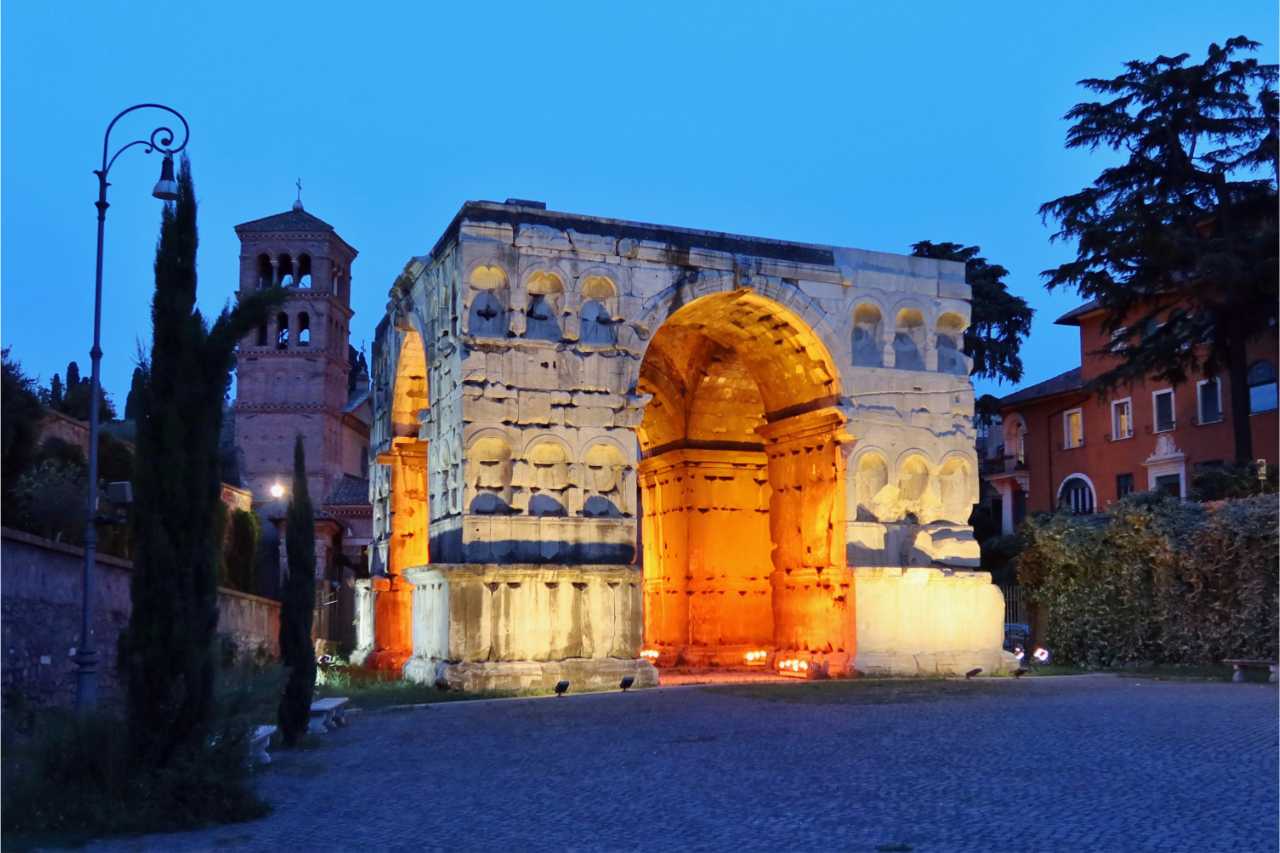 The Arch of Janus, also called the "Velabro" got new lighting in recent years and it's stunning at night!
The Arch of Janus, also called the "Velabro" got new lighting in recent years and it's stunning at night!This quadrifrons triumphal arch was constructed from spolia (scraps and shards) in the 4th century BCE.
Its exact use in antiquity is unknown.
You can easily see it near the above two structures.
On weekends, you can walk around it up close for free.
Arch of Constantine
It's pretty hard to miss this historic monument that sits between the Colosseum and the Roman Forum.
Constructed in 315 CE, this arch is dedicated to Constantine and celebrated his victory over Maxentius.
It's mostly made up of spolia (scraps) from other ancient ruins and monuments.
While Rome was once full of these triumphal arches, today we only have three left - the Arch of Constantine, and two inside the Roman Forum, the Arch of Titus and the Arch of Septimius Severus.
The latter two arches are visible from the outside of the Forum so you can see them even if you don't plan to visit the Roman Forum itself.
The Obelisk in Piazza del Popolo
One of 8 obelisks literally hauled to Rome from Ancient Egypt, this one, also known as the Flaminio obelisk due to its current location, was brought to the city in 10 BCE by Emperor Augustus.
Along with another ancient Egyptian obelisk that today stands in Montecitorio in front of Italy's Parliament, this obelisk was a "spoil of war" and marked Augustus' victory over Anthony and Cleopatra.
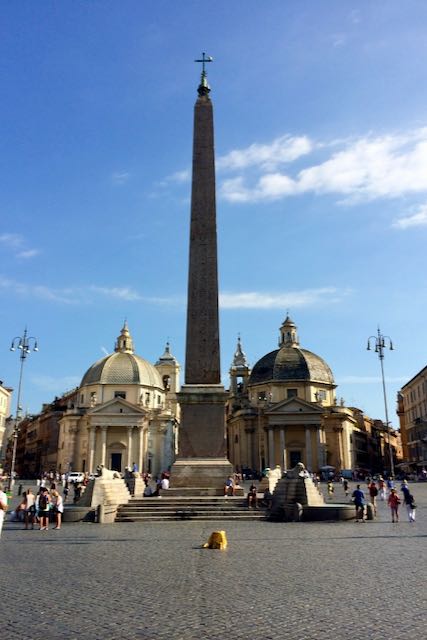 The huge obelisk in the center of Piazza del Popolo is an excellent example of how the Romans collected items from around their empire
The huge obelisk in the center of Piazza del Popolo is an excellent example of how the Romans collected items from around their empireIt once stood in the spine of the Circus Maximus, next to the even larger Lateran obelisk (which was itself brought to Rome by Emperor Constantine's son, Constantius II, in 357.)
While there are 8 obelisks in Rome from Ancient Egypt, there are another 5 obelisks in Rome that date to the Roman Empire and were constructed here.
Rome also has several more "modern" obelisks, such as the one in the gardens of the Villa Medici near the top of the Spanish Steps and Piazza Trinità dei Monti, and the fascist-era obelisk in the Rome EUR district.
The Pyramid of Cestius
Another Egyptian-inspired monument, this pyramid was built in 12 BCE as the tomb of Gaius Cestius.
Unfortunately, it's not easy to visit the inside, but you can easily see it from the outside, especially if you head to Rome's iconic Non-Catholic Cemetery (complete with cat sanctuary!)
Largo di Torre Argentina
Right in the center of the city, close to lots of historic locations as well as being a hub for buses, trams and taxis, Largo Argentina is more important than it looks.
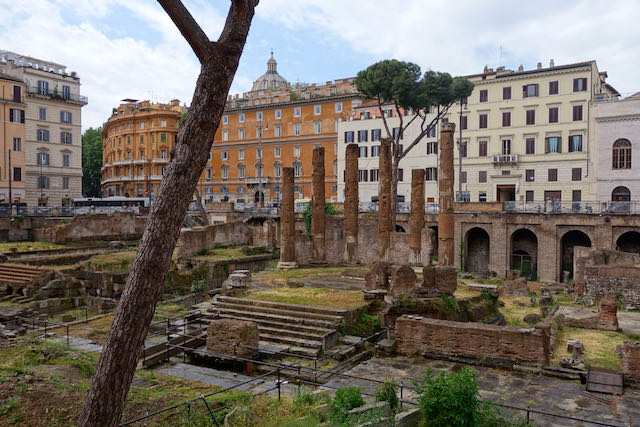 This site in the center of Rome marks the spot where Julius Caesar was assassinated on the Ides of March in 44 BCE.
This site in the center of Rome marks the spot where Julius Caesar was assassinated on the Ides of March in 44 BCE.The ruins on show are below the current street level so you can walk around the perimeter and look down on the ancient buildings.
Pompey's theater, next to the temples, is the location widely accepted to be where Julius Caesar was assassinated, so this is a place where history was truly made.
Plus, there is a cat sanctuary in the complex!
Believe it or not, the above list is just the tip of the iceberg when it comes to Ancient Roman ruins in Rome!
There are dozens of lesser-known ancient structures, obelisks, columns, towers, and more.
But this should give you a pretty good, if ambitious, list of ancient Roman monuments to see when you visit Rome.
More "modern" monuments in Rome
Some of the most important monuments from the Renaissance and later periods include:
The Trevi Fountain
The Trevi Fountain is Rome's most famous fountain and without a doubt one of the most popular and famous monuments in the Eternal City.
Based on a water source that dates back to ancient times, the current Trevi fountain was completed in the 18th century and is considered "Roccoco" style.
This is another of the most famous landmarks in Rome that are hard to miss as the Trevi Fountain is right in the historic center and close to many other must-see sites like the Pantheon, the Spanish Steps, and Piazza Barberini.
The Spanish Steps
Built in 1725 and named after the nearby Spanish embassy, this sweeping staircase going up from Piazza di Spagna has been an iconic part of the city of Rome for centuries.
Although it's no longer possible to sit on the steps, or to eat or drink on them, it's still a great spot to soak up the atmosphere, and the Rome views from the top are worth the climb.
One of the things that changed after Covid lockdowns was that many restaurants and cafés could have tables outside.
Two such cafés now have tables right on the square at the ground level of the Spanish Steps (known as Piazza di Spagna), so it is in fact possible to sit and enjoy the panorama while you enjoy a drink or a snack.
Don't miss the Barcaccia fountain in Piazza di Spagna as well!
Altare della Patria - The monument to Victor Emmanuel II
Built in 1911, this monument is dedicated to the first king of a united Italy (who is buried in the Pantheon).
The Altare della Patria is a massive structure and an important symbol of Italian nationalism, found in the center of the city.
Home to the eternal flame guarded by soldiers and overlooking Piazza Venezia, the history on display is significant.
You can easily visit many parts of it for free.
You can also pay a small fee to take the elevator to the top for arguably the best view in Rome.
And as a bonus, your ticket includes entry to a couple more museums.
Saint Peter's Basilica
The 16th-century church of St Peter's Basilica is arguably one of the most iconic monuments in Rome, even though, technically, it's not in Rome!
Vatican City is its own country, filled with history and lots more to see beyond the Vatican Museums and Sistine Chapel.
St Peter's Basilica is a stunning example of Renaissance architecture and home to some of Christianity's most important relics.
For many people, St Peter's Basilica (along with Saint Peter's Square and the nearby Vatican Museums and Sistine Chapel) are must-sees on any visit to Rome.
The Four Rivers Fountain in Piazza Navona
Constructed in the 17th century and designed by Gian Lorenzo Bernini, this fountain is a masterpiece of Baroque architecture.
You'll likely see it as you walk around Rome, as no visit to Rome is complete without a visit (or several!) to Piazza Navona.
For more about this piazza and the fountain, visit my page here.
Frankly, the list of Renaissance and Baroque-era fountains and churches in the Eternal City could go on and on, but these are just some of the most important "must-see" monuments in Rome.
Romewise's Top Travel Resources
Ready to book your trip to Rome? Take a look at these helpful links to companies we use and trust:
- Keep your travel spending simple with the Wise card, which removes all the worry about exchange rates and high transaction fees all over the world
- Search for and book your perfect accommodation
- Our complete guide to what to pack for Rome
- The number one travel accessory, a multi-point travel adapter and voltage converter
- Browse a huge range of tours in Rome and beyond
- Experience unique tours and special access to Rome's most popular sights
- Protect yourself with comprehensive travel insurance
Within this post there are some affiliate links for products and services. For more details about our affiliate policy click here.
Get your 100% free Rome trip planner now!
Simply sign-up today for our free newsletter and get the Romewise Quick Start guide to Rome:
We are committed to respecting your data. Click for our Privacy Policy.
Comments? Questions? Suggestions?
Please come over to the private Romewise Facebook group and join in the conversation.
You will often find me there, happy to answer your questions / comments!
You will also meet other Rome lovers and experts, too.
What are you waiting for?
- Romewise Home Page
- Monuments in Rome

